INTRODUCTION TO TSUKUDANI
Tsukudani is indispensable for Japanese food and Japanese people. It is a local specialty of Tokyo that was born after the one in the Edo period. The Tsukudani at the present is famous throughout Japan as one of the traditional Japanese foods.
Each region has its specialties and specialties that are rich in local flavors. Tokyo is the hometown of Tsukudani. Along with Tsukudani, there are also Monjayaki, Edomae Sushi, Shinagawa Meshi, Fukagawa-meshi, Chanko nabe, Bekko sushi, Negima nabe, Kusaya, and, Tempura, as representative dishes of Tokyo prefecture.
ETYMOLOGY

Nonetheless, Tsukudani (佃煮) has two root words behind its name. Tsukuda (佃) in kanji means “cultivated rice field.” But here, Tsukuda came from the Tsukudajima (Chuo, Tokyo in the present). During the Edo period, this island was the first to make this food. The second word is Ni (煮) which means “boil.” But, the Japanese are familiar with the meaning of Tsukudani as that of a “preserved-food boiled in soy sauce.”
WHAT IS TSUKUDANI?
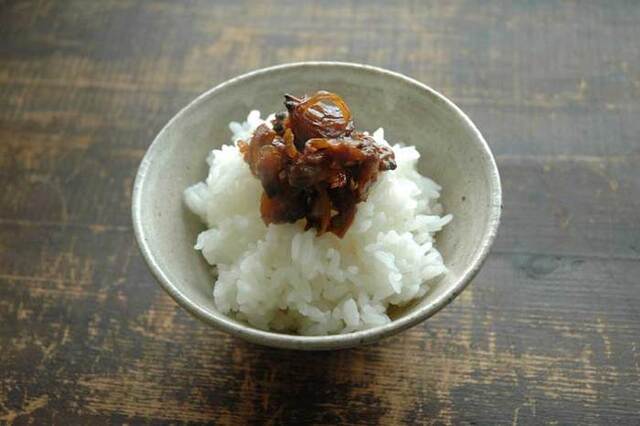
Tsukudani is a traditional Japanese food and a representative dish in Tokyo. It is small seafood, meat, or seaweed that locals simmered in soy sauce and mirin. Accordingly, by slowly boiling small fish, kelp, and seaweed with soy sauce and sugar, everyone can make it. Likewise, many love this dish for many years as a perfect side dish to accompany white rice.
Since it was a preservative food that uses surplus food, it is still good food to eat. It has become surplus to the needs of the commercial food sector. You can also make Nori Tsukudani with kombu or wakame seaweeds. Also, locals make use of this to reuse ingredients from discarding dashi.
TYPES OF TSUKUDANI

There are more than 100 types of tsukudani, including the main ones. There are types of Tsukudani according to the raw materials used. The typical types are:
Seafood/Fisheries Tsukudani
These are Tsukudani that use marine products such as kelp, sardines, clams, seaweed, and shrimp.
Agricultural Tsukudani
This type is from agricultural products such as wipes, leaf peppers, shiso, burdock, and beans. Some have a simple and rustic taste, while others are spicy with chili peppers and Japanese pepper.
Other Tsukudani
There is also Tsukudani using walnuts, locusts, and bee cubs. This type is those which does not correspond with the ingredients from marine and agricultural type. Likewise, beef Tsukudani is one of the other Tsukudani.
TSUKUDANI HISTORY

Do you know the birthplace of Tsukudani? Tsukudani originated in Tsukuda Island in Edo (currently Chuo-ku, Tokyo). Furthermore, this place was one of the most famous spots of Edo and bestowed a lasting legacy upon Japanese cuisine. Tsukuda has humble commoner roots as well as a connection to not only the samurai class but to the very shōgunate itself. Somehow, it is food-related to Ieyasu Tokugawa, the first shogun of the Edo Shogunate. Some Japanese locals say that the dish became famous thanks to Ieyasu Tokugawa.
When Ieyasu Tokugawa travel on Edo, he moved dozens of fishermen from Tsukuda Village to the current Tsukuda district, the origin of “Tsukuda Island.” Besides, it seems that the early Tsukudani was not the dish that uses soy sauce and sugar as it is now, but the simple one boiled only with salt. Currently, this dish spreads all over the country, and you can enjoy various types of it with local ingredients and manufacturing methods. At that time, the fishing industry in the Kanto region was behind that in the Kansai region. So they needed a fisherman who could deliver high-quality fish to the Tokugawa Shogunate. By then, fishermen delivered delicate fish to the shogunate. And the small fish collected are boiled in soy sauce and given to common people.
Furthermore, Tsukudani is also an offering for festivals at Sumiyoshi Shrine and as a preserved food. At that time, there is a theory that salt simmered was more popular than soy sauce steamed. Still, in any case, it was helpful because it was highly preserved and delicious. Then, during the Tenpo era (around 1830), they commercialized it and soon became a specialty of Edo. It was popular among the common people.
TSUKUDANI RECIPE

Tsukudani recipes involve some ingredients such as sweet and spicy, stewed fish with sugar, soy sauce, mirin, and seasonings. Additionally, there are different ingredients as to how you would like your version of Tsukudani.
Simmered Bonito Cubes
We add apple, lemon juice, and red wine to soy sauce and sugar-based sauce and slowly cook it in a special sauce with bonito flakes. It will give off a mellow tsukudani with richness and flavor.
Bonito Kakuni
We add apple juice and red wine to soy sauce and sugar-based sauce and slowly cook it in a special sauce with bonito flakes.
Tsukudani clams
By adding shredded kelp to the tsukudani clams, the flavor of kelp will improve the taste will enhance.
Beef and root vegetables
Ginger and garlic are mix with soy sauce and sugar-based sauce and cooked slowly. The beef is moist, and the burdock and lotus root are crispy and have a pleasant texture.
HOW TO MAKE TSUKUDANI?

The characteristics of Tsukudani point to its use of ingredients and soy sauce flavor. Hence, there are several cooking methods of a typical Tsukunadi. There are two recipes for Tsukudani that you can make at home. It’s a recipe using ingredients such as dashi stock and shirasu.
Dashi Tsukudani
[Material] Dashi stock 75g (30g of bonito flakes); Sugar, mirin, soy sauce: 2 tablespoons each, sesame seeds: appropriate amount.
Arrange the dried bonito flakes after removing the dashi stock into Tsukudani.
Put dried bonito broth in a frying pan, add sugar, mirin, and soy sauce and fry on low medium heat.
When there is a small amount of water, turn off the heat then, add sesame seeds, and mix.
Shirasu Tsukudani
[Material] Shirasu: 100g; Tsuyu no Moto (3 times thicker): 150 ml; Sugar: 5 tbsp; Ginger: 1 piece
Put the shirasu in boiling water and boil it for 1 minute to drain it.
Put soup stock (three times thicker), sugar, and ginger in a pan and heat.
When the sugar has melted, add 1 shirasu and simmer over low heat, occasionally removing the lye and mixing.
When the amount of liquid is about 1/2 to 1/3, turn off the heat and let it cool. You can drain the liquid and you’re done.
DIFFERENCES BETWEEN TSUKUDANI, SHIGURE-NI, AND KANRO-NI

All three of them are eaten as snacks with sake and as a companion to white rice. Tsukudani originated in Tsukuda Island in the Kanto region. At the same time, Shigure boiled, a preserved food also, born in the Kanto region. Both have a strong flavor, and sweetness which characterizes them. The big difference is that it uses plenty of ginger for seasoning. Consequently, Kanro-ni, its name means “honeydew.” Its seasoning is a sweet and spicy one with just soy sauce and sugar and starch syrup.
DID HONNOJI INCIDENT GIVE BIRTH TO TSUKUDANI?

Somehow, many believe that the Honnoji Incident gives birth to Tsukudani. Honnoji Incident was the assassination of Oda Nobunaga at the Honnō-ji temple in Kyoto 1582. Ieyasu is Nobunaga’s ally and is one of the targets. He and his party made an escape plan with the utmost determination. However, they are stranded in the Kanzaki River (now Sumiyoshi Ward, Osaka City) without a boat to cross the river. Fishermen, led by Sonemon Mori, a shoya in nearby Tsukudomura, appeared here like a savior. They prepared a fishing boat and boiled small fishes stockpiled in the boat became their meal on the way.
WHAT ARE THE BENEFITS OF PRESERVING FOOD?

Preserving food has some good benefits on them. It decreases food wastage and prevents the food from being spoiled by the action of enzymes and microorganisms. Preserving food also increases the storage period of perishable food materials. Moreover, it also ensures the all-year availability of seasonal food materials. It increases the availability of various foodstuffs even at distant and not easily approachable places. In other words, it makes the transportation of food materials easier.
WHAT ARE THE OTHER PRESERVED FOOD IN JAPAN?

There are other preserved foods in Japan, categorized by grains, side dishes, and sweets. On the preserved grains, they have what they call “Hoshii” (dried, boiled rice) and “Soumen.” “Kouya Tofu” (freeze-dried tofu), “Kiriboshi daikon,” “Umeboshi,” is an example of their preserved side dishes. Consequently, their preserved sweets include “Hoshigaki” (dried persimmon).
RECOMMENDED TSUKUDANI RESTAURANTS
Tsukudani Maruhisa
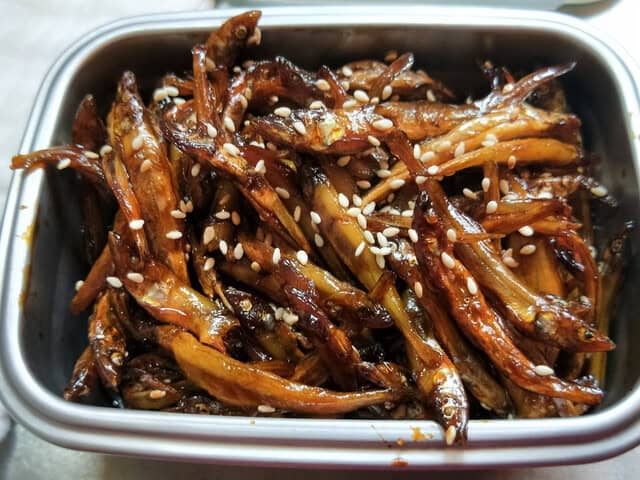
Tsukudani Maruhisa is about a 1-minute walk from Sumiyoshi Shrine. The shop has a stylish white appearance and gives a modem impression. The store continues to make the classic Tsukudani carefully. Although the materials use to change according to the season, clams are the most popular. Many regulars come to buy them when the refrigerator is out of stock. The clam tsukudani is very delicious to eat with rice and mix with pasta and sprinkle with perilla and seaweed.
Tsukuda Boiled Cheonan Main Store

This shop is the long-established Tsukudani Tenan Main Store founded in 1837 (Tenpo 8). Accordingly, Cheonan Main Store maintains its unchanging taste for 182 years since its establishment. They use a secret sauce based on the rich soy sauce “Miotsukushi” produced in Chiba Prefecture to produce sweet and rich Tsukudani. Although it is a little more expensive than the standard one, you should have this unique dish.
Tsukuda Tanakaya

If you pass in front of the shop, you can enjoy the pleasant scent of Tsukudani even outside. Thus, the store is adjacent to a factory that makes tsukudani, so the scent of it spreads quickly. Tsukuda Tanaya’s Tsukudani has its seasoning that suits everyone’s taste. Likewise, it is not too sweet and not too bland, yet you can feel the flavor of the ingredients.
Yanagibashi Komatsuya
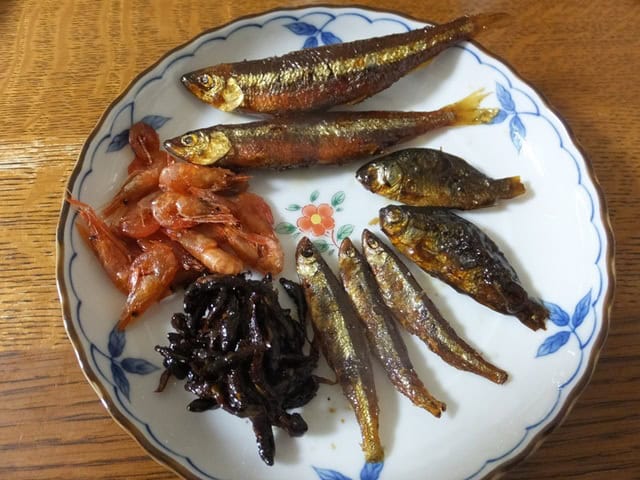
It is a famous Edomae Tsukudani restaurant in Yanagibashi. Yanagibashi Komatsuya is famous in Tokyo. You can indeed feel the strength of soy sauce in the clam Tsukudani they serve. It is the most delicious when used as an ingredient for ochazuke and rice balls. The soy sauce and sweetness are both modest and have an elegant taste.
CONCLUSION

To sum it all up, the deeply seasoned Tsukudani is a traditional taste that the Japanese love for a long time because the locals preserve it well and it goes well with rice. It is also possible to study this dish using rare ingredients and a new combination will be made. Although many thought that local dishes and specialty products are not so noticeable, they became a part of the food culture born in Edo up to the present day. Consequently, it is famous as daily Japanese food. It is born on Tsukuda Island in Edo, valued as a side dish for fishermen and a highly preserved ingredient.










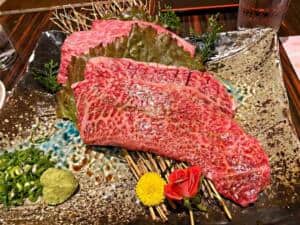




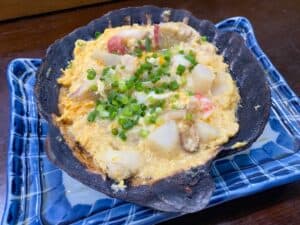
Comments